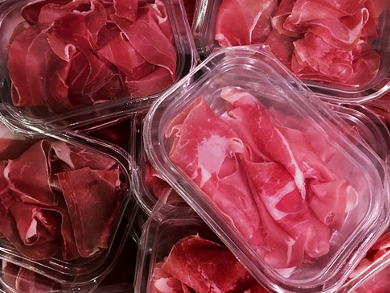Food contamination remains one of the largest threats to public health despite the advances that have been made in packaging and refrigeration. Governmental agencies monitor food safety by randomly sampling products for testing, but how can you be sure of the safety of the packages you bring home from the store?
Real-time monitoring of every package of meat, cheese, or lettuce would alert consumers to the dangers in their own kitchen. Previously a DNAzyme (named RFD-EC1) was developed, which fluoresces when Escherichia Coli protein is detected [1]. Now Carlos D. M. Filipe, Tohid F. Didar, and colleagues, McMaster University, Hamilton, Canada, have used inkjet printing to coat a plastic film with RFD-EC1. The resulting film is stable and functional in a pH range of 3–9 and remains active after two weeks at room temperature.
The RFD-EC1 film was tested for sensitivity and specificity to E. Coli bacteria. Results showed that the limit of detection is around 103–104 CFU/mL, which is very compatible with other E. Coli detection systems. In addition, the film was shown to be specific for E. Coli when tested against other gram negative, as well as gram positive, bacteria.
This simple system has already been used for real samples of meat and fruit, showing that when the samples are spiked with bacteria the plastic wrap fluoresces. It will be interesting to see if similar films can be developed for other types of bacteria and if such a film can be successful on an industrial scale.
- Sentinel Wraps: Real-Time Monitoring of Food Contamination by Printing DNAzyme Probes on Food Packaging,
Hanie Yousefi, M. Monsur Ali, Hsuan-Ming Su, Carlos D.M. Filipe, Tohid F. Didar,
ACS Nano 2018, 12, 3287–3294.
https://doi.org/10.1021/acsnano.7b08010
[1] S. D. Aguirre, M. M. Ali, P. Kanda, Y. Li, Detection of bacteria using fluorogenic DNAzymes, J. Vis. Exp. 2012, 28(63), 3961. https://doi.org/10.3791/3961


